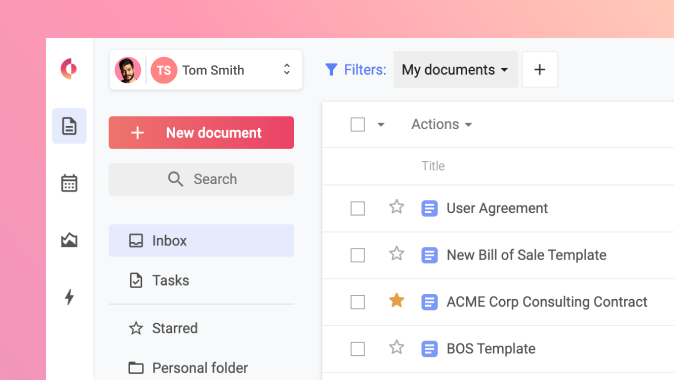Ambiguity In Contracts: What Is It and How Can You Avoid It?
Table of contents
- What is contract ambiguity?
- What are the risks associated with ambiguity in a contract?
- 4 ways to avoid ambiguity in contracts
- Ambiguity in a contract in summary
-
About Concord
Effortless contract management, from drafting to e-signing and beyond. Book a live demo to see Concord in action.
Request demo
Ambiguity in a contract can turn into a major issue, leading to misunderstandings, disagreements, and even litigation. For all these reasons, contracts should be clear and straightforward to avoid disputes.
Internally, the risks associated with ambiguity in contracts are significant. Ambiguous contracts can cost a company time, money, and reputation. To avoid them, it’s important to take measures to minimize any potential obscurity in a contract.
In this article, we’ll explore the risks associated with contract ambiguity, and how to avoid it.
What is contract ambiguity?
Contract ambiguity is the lack of clarity in a written agreement, making its terms unclear or open to multiple interpretations. This confusion can lead to disputes between parties involved in the contract. Courts often interpret ambiguous terms against the party that drafted the contract.
What are the risks associated with ambiguity in a contract?
Ambiguity in a contract leads to confusion and uncertainty for all parties involved, creating contractual risks. For example, a lack of clarity can result in legal disputes, financial losses, and strained relationships between parties.
In many cases, contract ambiguity may lead to the following consequences.
4 ways to avoid ambiguity in contracts
1. Define key terms
One of the most common causes of ambiguity in contracts is the use of undefined key terms. To avoid this, it’s important to clearly define any key terms used in the contract.
This can be achieved by including a definition section in the contract that outlines the meanings of any critical terms used. Defining these terms will ensure that all parties involved have a clear understanding of their intended meaning, reducing the risk of contract ambiguity and potential disputes.
For technology in particular, defining the names of software or specific products can help the entire legal process flow more smoothly, especially for people who may not be as familiar with these kinds of terms. Collaboration is key here, as many sets of eyes can determine what’s missing or unclear.
2. Use consistent legal language
Keeping language consistent across the whole organization ensures terminology remains the same, no matter where the contract is created. In larger businesses, various departments draft and send contracts, thus language consistency will help a company remain uniform regardless of who creates the contract.
Contract templates can greatly help with preserving consistency in contract language. Legal can draft and approve all templates so there is less room for interpretation and the language used is uniform.
You can store templates in a contract management software tool and update them whenever necessary. These updates are immediately pushed to anyone who creates their next contract from the template, meaning there are no more issues with teams having to download a new template every time a change is made.
3. Avoid unnecessary complexity
Contracts can become unnecessarily complex when too many technical terms, jargon, and legalese are used. This can make it difficult for non-legal experts to understand the contract’s contents and increase the likelihood of misunderstandings.
In order to prevent misunderstandings, it is essential to keep the wording of contracts simple and straightforward so that all parties understand the document. This can help ensure that the contract’s terms are interpreted correctly, and that any disputes are avoided.
4. Foster team collaboration
What’s clear to one person may be confusing jargon to another. Collaborating as a team ensures that new sets of eyes are able to clarify any confusion in templates, drafts, and final documents. Working together to add suggestions and improvements means less work for each team member.
A great way to encourage collaboration is to use a contract management platform with contract approval workflows. Legal can be included on every document so there’s no confusion and the final sign-off is simple.
Other elements such as discussion panels and in-line editing aid this process. Having a set process in place will ensure collaboration is consistent and helps teams work faster.
Ambiguity in a contract in summary
To sum up, ambiguity in contracts can lead to significant legal and financial consequences, making it crucial to ensure that contracts are specific, clear, and understandable to all parties.
To avoid contract ambiguity you should:
- Define key contract terms
- Use consistent legal language
- Avoid unnecessary complexity
- Facilitate team collaboration
Investing in a contract management platform can also streamline the process and increase efficiency. By centralizing your contract management process in a single online tool, your team can reduce the risks associated with contract ambiguity — saving time, money, and reputation in the long run.




